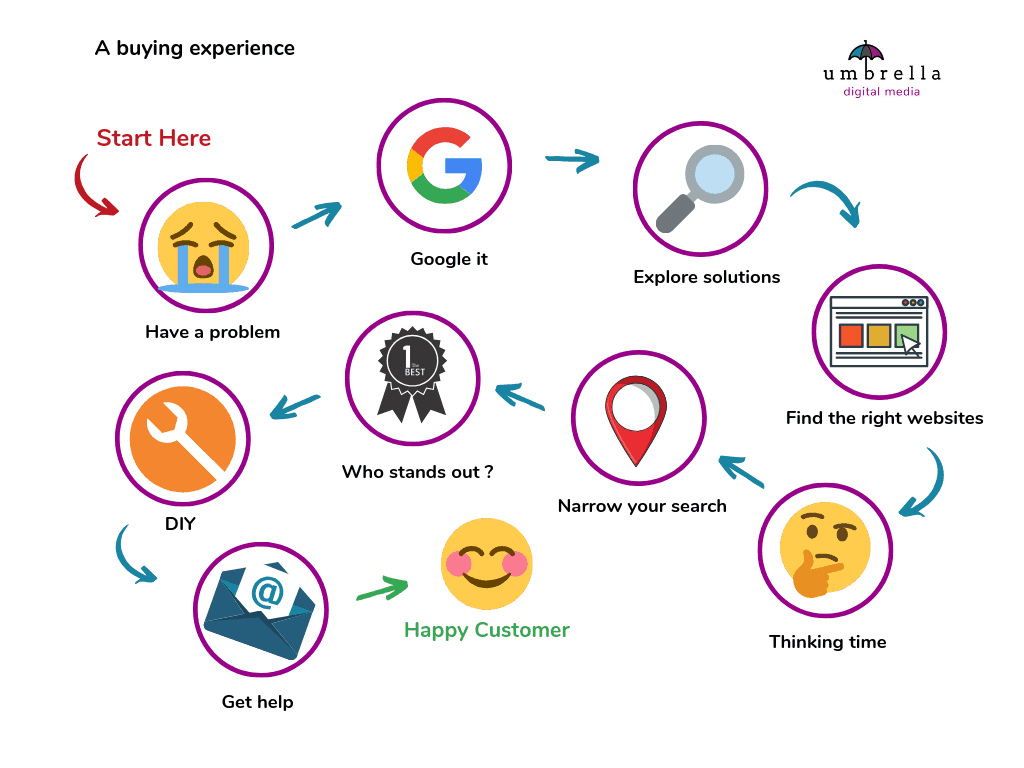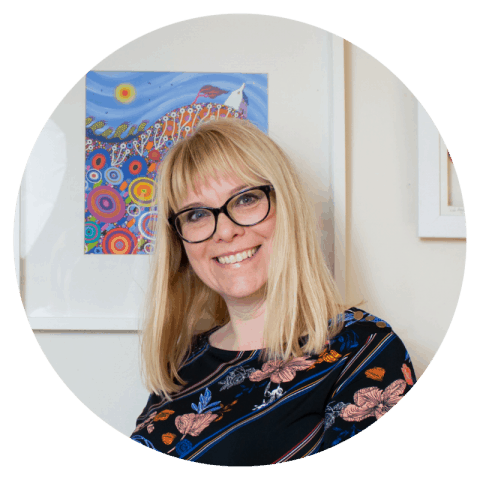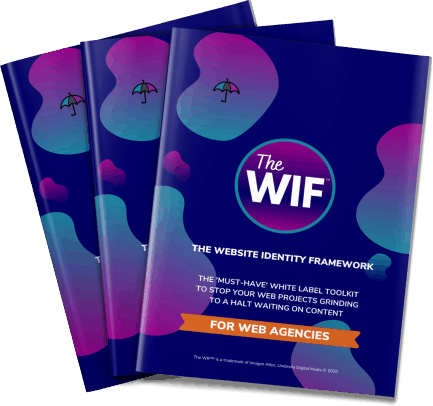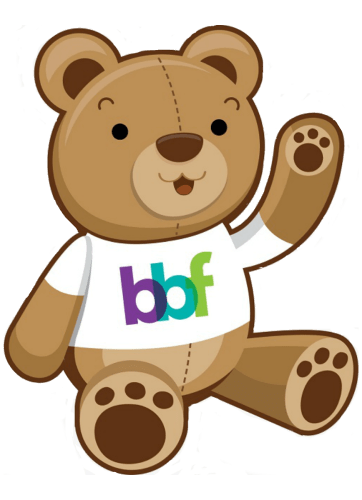Are you feeling frustrated and despondent with the lack of enquiries on your website? Do you feel uncomfortable about ‘selling’ your services but struggle with what to say on your website? Both of these frustrations are interlinked and in this article I am going to explore how focused website content will help you to overcome your frustrations and gain insight on where and how to focus your efforts. Unfocused website content means you will struggle to connect with your audience and generate leads. Once you gain clarity, you can look at your own website content with a fresh perspective and generate ideas to make your content better.
Let’s look at the three main sections I will cover:
1. ‘Who’ you are talking to on your website
2. ‘What’ your potential customers want to know
3. ‘How’ you can deliver the ‘Who’ and the ‘What’
The content on your website should talk directly to your potential client. Give them the information they need to help them solve the problems they have. Exceed their expectations of what they hope to find when they land on your website and be super helpful.
The face of marketing has changed. The grip of power and information that businesses had over consumers has flipped and the power is now entirely in the hands of the consumer. In Mark Schaefer’s book, The Marketing Rebellion, he writes about how customers of today are in control of the marketing they choose to consume. If we are to win their attention or gain their business, then we must do what is necessary to educate and encourage those consumers to drive our business results.
Google has become the crutch we turn to to find the content we want to help us make informed choices. Being well informed leads us to make a happy buying decision to engage a service to solve the problem we have. Consumers do not want to be sold to, they want to be certain of their buying choice. Let’s face it, there is nothing worse than feeling buyer’s remorse post-purchase. Think about your own buying experiences. For me, I want to build trust first before making any commitment to purchase. A relationship starts with trust and builds over time. We wouldn’t want a proposal of marriage on a first date, so why would we treat consumers any differently?
In Kenda MacDonald’s book, Hack the Buyer Brain, she writes about how when we understand the psychology of the buyer’s brain, we will make great strides in our marketing, with our consumers at the forefront of our marketing efforts. This is exactly where we need to start.
Why Your Website Content is Not About You
The Buying Process
Examining the buying experience will help you see why your website content is not about you. Take a moment to think about your own buying experience. Here’s my own take on what I go through when I am looking for the right service or product for me:

A Buying Process
- Have a problem: the realisation that you have a problem
- Google the problem: start researching your problem
- Explore solutions: disappear down the ‘rabbit hole’ of research to investigate your problem in more detail (this could take some time!)
- Find the right websites: find and note the best websites with relevant and helpful information
- Thinking time: in-depth thinking time about your problem (good to mull it over)
- Refine your search: in-depth research with a few websites
- Who stands out?: is there one person or company who stands out more because their content answers the questions you have? (Keep going back for more)
- DIY: initially you might try some DIY options to solve your problem with the information you have
- Get help: crisis point as you realise you need help to fix the problem and make contact with the company you trust to help you resolve your problem
- Be a happy client
The above is my take on a basic buying journey. You can see how many steps are involved and a potential customer could pass back and forth through some of the stages before they are ready to move on. Looking at this example makes it really clear about what a potential client might go through before they make themselves known to you and are in a position to be ready to make that initial enquiry. Bear in mind how many steps it could take before you even know about this potential client.
Why is this?
Today’s consumer does not want to be sold to. The Zero Moment of Truth published by Google tells us that 70% of the buying decision has been made at the point of the first contact.
This demonstrates also that you, as a business, are not able to control this process through a traditional way of selling. What it does tell you is the information you provide on your website can and will be consumed before you are even aware of the needs of a potential client. And that is why the content on your website needs to be the right content to meet the needs of a potential customer who is moving their way through the pre-purchase steps.
Before you begin to look at what content you want to produce you need to work out:
1. Who Are You Writing Your Content For?
Identify Your Audience
You need to do some work to identify who you want your content to help. Your content should be empathetic to your potential client. Put yourself in their shoes and feel their pain. Who is the ideal client you can really help and what type of clients do you enjoy working with?
My relentlessly helpful friend, John Espirian has a great resource page on his website which takes you through a process to help you identify your ideal client. This is the perfect exercise if you need help with this.
Resource: John Espirian, Pen Portraits: Understanding Your Ideal Audience
Be Helpful
Make your content helpful, do not hold anything back and add lots of valuable insight and freely give your own knowledge to help others. You might be worried that you will be giving away too much information for nothing or even worse, your competitors might see. However, what it will do for you is to establish your credibility, show your expertise and create and build trust. Only positive things will come out of sharing your knowledge so don’t hold back.
2. What Your Potential Clients Want to Know: Ask Questions
Be Specific
Specificity is key. When you get really specific with your content you can directly get to the heart of the problem and help your clients better. Go ‘micro’ about the subjects you write about; answer questions in as much detail as you can to make it easy for the consumer to make the right buying decision for themselves.
Research
If you don’t know what pain points your potential clients are experiencing then ask your existing clients to tell you about the specific problems they had before they approached you. Look back through your emails and see what questions are being asked by prospective and existing clients and list the questions which come up time and time again.
If you are a bigger organisation with a customer support team in place, then keep a list of all the questions that are raised and start to produce content that answers them. Every business will have questions that get asked time and time again.
Writing an article or publishing a video to answer those questions can add the value of great content to your website, and it can also save you heaps of time by not having to answer the same questions over and over again.
In his book, You Ask They Answer, Marcus Sheridan writes, “The fact is, every industry has hundreds of questions about what prospects and customers want to know when they’re making a buying decision. Whether it’s B2B or B2C, everyone wants to feel like they’ve made an informed buying decision, and they certainly don’t want to make any mistakes.”
This is what you need to tap into and publish the content on your website. Marcus continues, “The irony is that every industry has hundreds of buyer-based questions. It is the sad reality that most company websites don’t even address more than a few dozen questions.”
Consider your own buying journey again. Would you agree that you, as a consumer, want to find out information that helps you with your own buying decision? Yes? So when you have your own business ‘hat’ on, why then does the talk become focused on yourself? Can you see what you could be losing by not focusing on your potential client? Of course, there is a time and a place to talk about you, people want to get to know you but it should not be the main focus of your content.
3. ‘How’ you can deliver the ‘Who’ and the ‘What’
Now you have identified your ideal client and are speaking directly to them and answering their questions, you need to talk about the ‘How’.
User Experience and Journey
The user journey on your website must lead the way to consumers taking ‘action’. Your job is to clear the path to make that action as easy as possible. The trick is to not make the potential client have to think too hard about what they have to do next. Too much thinking or creating confusion means no action is taken. So any calls to action must be clear and unambiguous.
- Use language in your website content which is easy to understand and jargon-free
- Be 100% transparent about what will result from a certain action being taken
- Don’t try and solve their problem with a list of services but educate them with the ‘how’
- Steer clear of excessive technical jargon or talking about processes you use in your business and speak to them in terms of outcomes, gains and benefits they can expect and how that can help them move forward
I understand it is often difficult to ‘see the wood for the trees’ when you are looking at your business from the inside. This is why I work with businesses like yours because I can see more clearly from the outside. Clients I work with have similar struggles with trying to articulate what it is they do for their own clients and how they can help them. My objective view can help draw that out and see things you can’t. This can be extracted into something tangible that can be weaved into your website content.
A Good Example of User Journey
Content Boost is a company helping businesses with their content from the strategy phase through to publishing. This is the perfect example of a well-designed website with a clear user journey and clear choices for potential clients to make.

The website accommodates the varying stages of the one problem their potential clients face. They clearly state what it is they do for the clients and what the outcomes are in their Unique Proposition Value below. (Source: Wordstream)
“Struggling to stand out in your market?
We help companies position themselves as a market leader and attract ideal clients who are ready to buy.”
Although Content Boost’s service is about content, in their UVP they set the objective of what they help their clients achieve rather than the nitty-gritty of what they need to do to help them get there.
Content Boost helps their customers with their content production, but the types of clients they help fall into 3 categories:
1. Start-Ups
2. Established solopreneur or consultant
3. Director of a growing business
Although the three audience categories are different, their potential clients all face the same problem of content production but with different challenges. How much and what type of help they need will depend on the stage they are at. As the customer type clicks through from each of these categories on the homepage, the content becomes focused on that customer type and the specific challenges they are struggling with. This is incredibly powerful because the specificity of the content becomes attractive to solve their specific pain point.
Following on from where the website flow has brought them, there are clear calls to action for different levels of support available such as having a call, a critique service or a managed service.
This is such a good example because the choices laid out for the potential customer are clear and specific, the mental challenge of choice is simply not there for the potential client to deal with. The subsequent journey is made easy.
“Give lots of valuable advice, pouring out your own knowledge to help others. Only positive things will come out of sharing your knowledge so don’t hold back.”
~ Imogen Allen
Talk About the Process
It’s important to outline the process that lies up ahead as your prospect goes through each step closer to becoming a client. As you do this, talk about it from their point of view and what they need to do to move through the process. Again, don’t get hung up on telling them what you need to do to move things along, they will only be interested in how it affects them and what they need to do to make things happen.
Be Transparent
Be honest in your website content and be clear about who you are and what you’re offering. Transparency creates trust and trust is the beginning of the best of relationships. Your ‘About’ page is a place where you should talk about yourself and give some background about yourself and what it is that gets you out of bed in the morning. It’s the right space to talk about your company mission and vision which helps your potential clients align with the type of person or company you are to help them decide if you are right for them.
The more transparent you are, the more it will act as a natural filter so the right type of clients that you want will be attracted to you.
In Summary
Your website content is not about you.
In fact, as Donald Miller says in his book Building a Storybrand your prospective client is the hero of your website and not you. The content you create on your website and blog should be there to educate and support potential clients through their own buying journey to make the right and informed decision for them.
The right website content will help consumers to decide within a very short timeframe of seconds whether the content on your website is worth their time and attention. They want to know quickly and easily if you and your business can actually help them.
Good website content establishes your expertise and credibility and ultimately leads to sales without ever being salesy.
Creating website content is not an easy task and it’s always so much harder to do it on your own. During a website discovery session, we will get to the core of who your business is, who you help and why. If you’re feeling stuck and want the right help to move forward then let’s have a conversation.





